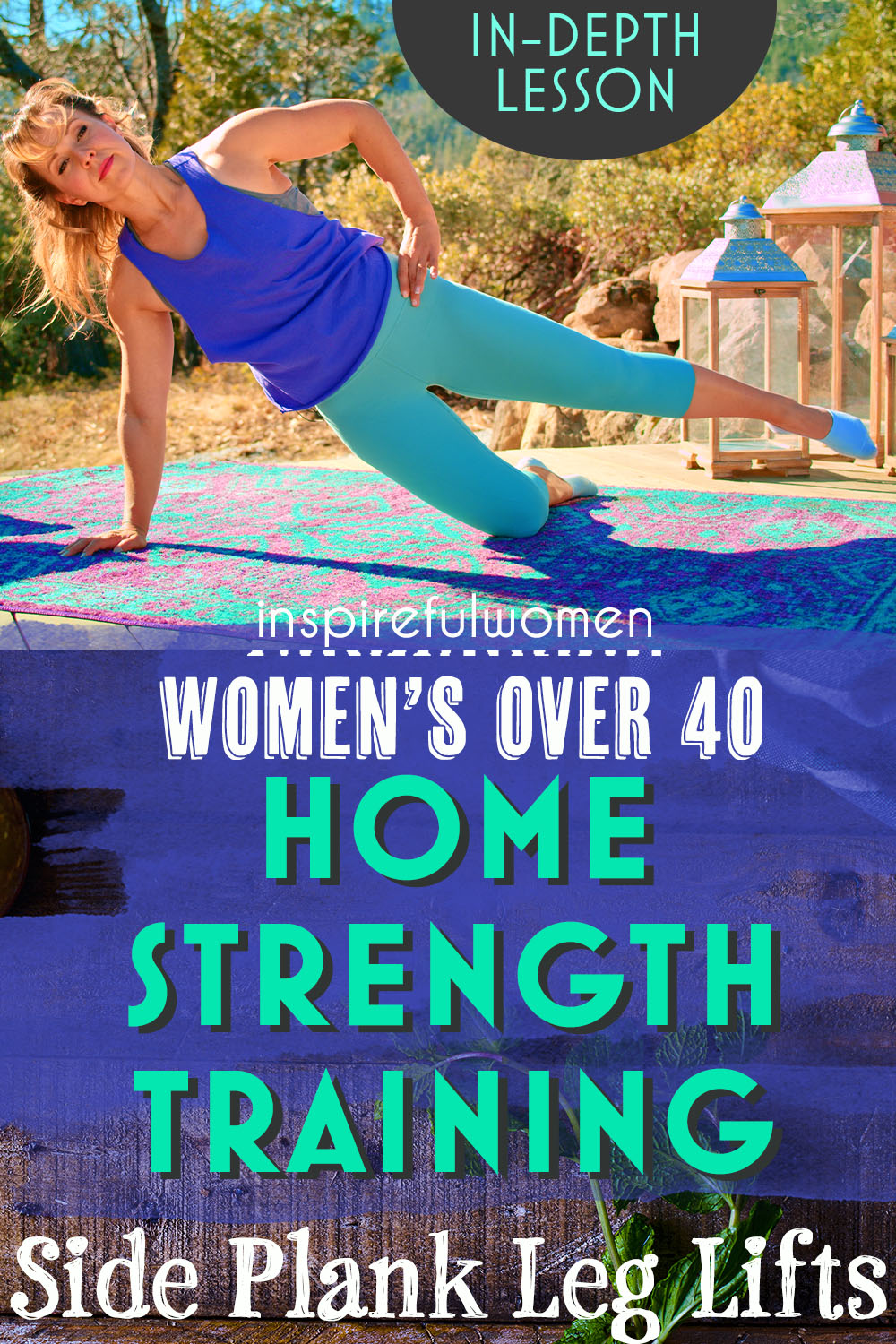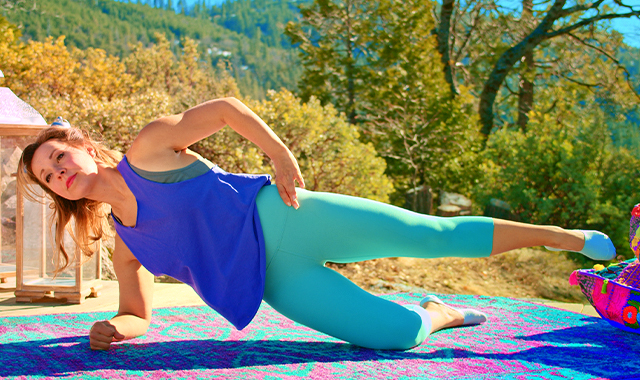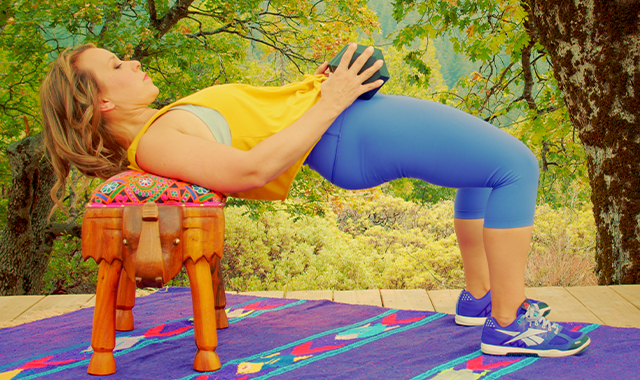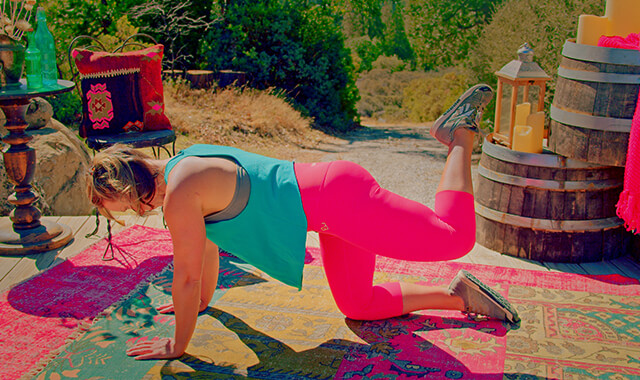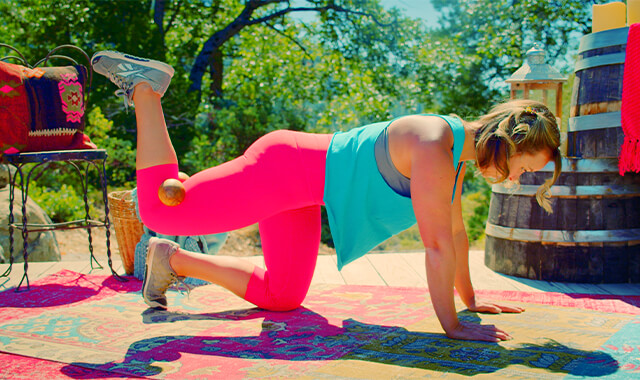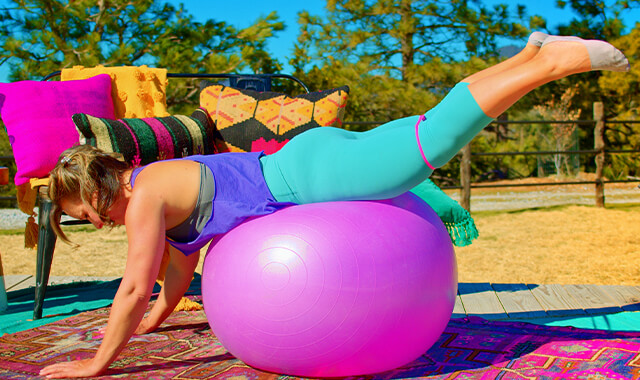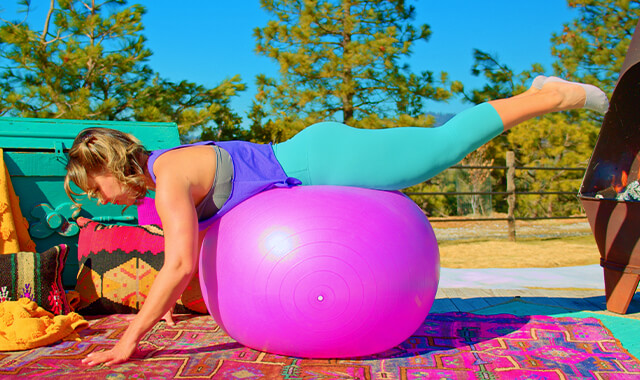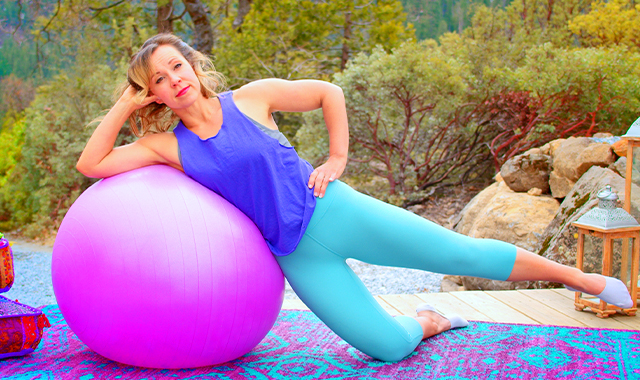Side Plank Leg Lifts - Glutes
How to Do Side Plank Leg Lifts - Hip Abduction Glute Exercise| In-Depth Guide [VISUAL LEARNERS] Beginner
Proper Form, Common Mistakes, & Variations | Home Resistance Training
WHAT DO YOU WANT TO SEE?
QUICK DEMO
QUICK DEMO
MUSCLES THIS WORKS
MUSCLES
MAIN MUSCLES WORKED IN Side Plank Leg Lifts
GLUTEUS MEDIUS & GLUTEUS MINIMUS
These are the smaller glute muscles on the sides of our hips.
OTHER MUSCLES WORKED:
- Internal and external obliques
- Quadratus lumborum
- Psoas major
- Rectus abdominis
- Erector spinae
- Multifidi
- Transverse abdominis
STARTING POINTERS
Starting Pointers
WHAT WE'RE DOING TODAY
Other names for this exercise: Side Plank Leg Raises, Side Bridge with Leg Lifts
ALL WE'RE DOING:
In a knee side plank position, we'll just be lifting 1 leg a few inches in the air.
This is a version of the side-lying leg lifts. The easy exercise is done in a side plank position working off of a straight arm. This is a less stable position that will work the core muscles more, in addition to working the muscles of the shoulder and arm that are on the floor. This exercise strengthens your core, engages your hips and glutes, and improves stability.
The side plank position will work the muscles that are on the side of the body that are closer to the floor. The side-lying leg lift works the muscles of the top leg. So this exercise can be used to train both hips, in different ways. The muscles of the bottom hip will be working isometrically to hold the position while the hip muscles of the top leg are working to lift and lower the leg. The goal of the exercise is to keep the torso very stable as the top leg moves up and down. If you are unable to keep the torso stable, lower down into a forearm side plank and work on straight arm side planks without the added leg lift.
HOW TO DO THE EXERCISE
LOOKS
HOW Side Plank Leg Lifts SHAPE OUR BODY
Firm and toned waist, flat abdomen, toned outer hips (firm saddle bag region).
PROPER FORM
PROPER FORM: Side Plank Leg Lifts
EQUIPMENT, SETS & REPS
EQUIPMENT
Mat, optional small folded towel or pillow for the head.
SUGGESTED STARTING WEIGHT FOR WOMEN:
None (weight of leg)
SETS & REPS:
1 -2 sets of 8-10, must fatigue the muscles.
PACE:
Slow and controlled up and down.
BODY POSITION
BODY POSITION FOR Side Plank Leg Lifts
ARM: Lying on your side, your bottom arm is straight with the palm flat on the floor. Your hand in line with your elbow and your elbow is right under your shoulder joint. Your elbow is straight but not locked or hyperextended. The upper part of your other arm lying along the side of your trunk, your elbow can be straight or bent - should be comfortable.
BODY POSITION: Sternum lifted, shoulder blades in and down the back, space between the top of your shoulders and your ear lobe. Chest wide - this is important to avoid rounding the shoulders in. Abdominals gently engaged. Shoulders and hips stacked one on top of the other and squared. Keep your waist long, you should not allow the side of your waist that is on the bottom to drop. This ensures that your spine is neutral and not side bending.
LEGS: Bottom knee bent, your top leg is straight and resting on bottom leg. Your knees should be in line with the hips - so no crease in the front of the hips. You should be able to draw a line down the side of your body through the earlobe, torso, hip, and knee; and down the top leg - knee to foot.
NECK: Neutral and relaxed, looking straight ahead. In line with the rest of your spine.
HOW TO DO
HOW TO DO Side Plank Leg Lifts
CUE: The movement comes from the hip joint, the torso is still and stable.
From the side lying position, push down into the bottom hand and knee and lift the pelvis off of the floor until you are in a straight line - the side plank position.
Lift your top leg up a few inches, pause at the top and slowly return it back down - do not touch your top leg down to the bottom leg in between reps.
Stay up in the side plank position for the entire set of leg lifts.
HOW TO SAFELY GET OUT OF THE EXERCISE
Lower your hips back down to the floor, press up to sitting.
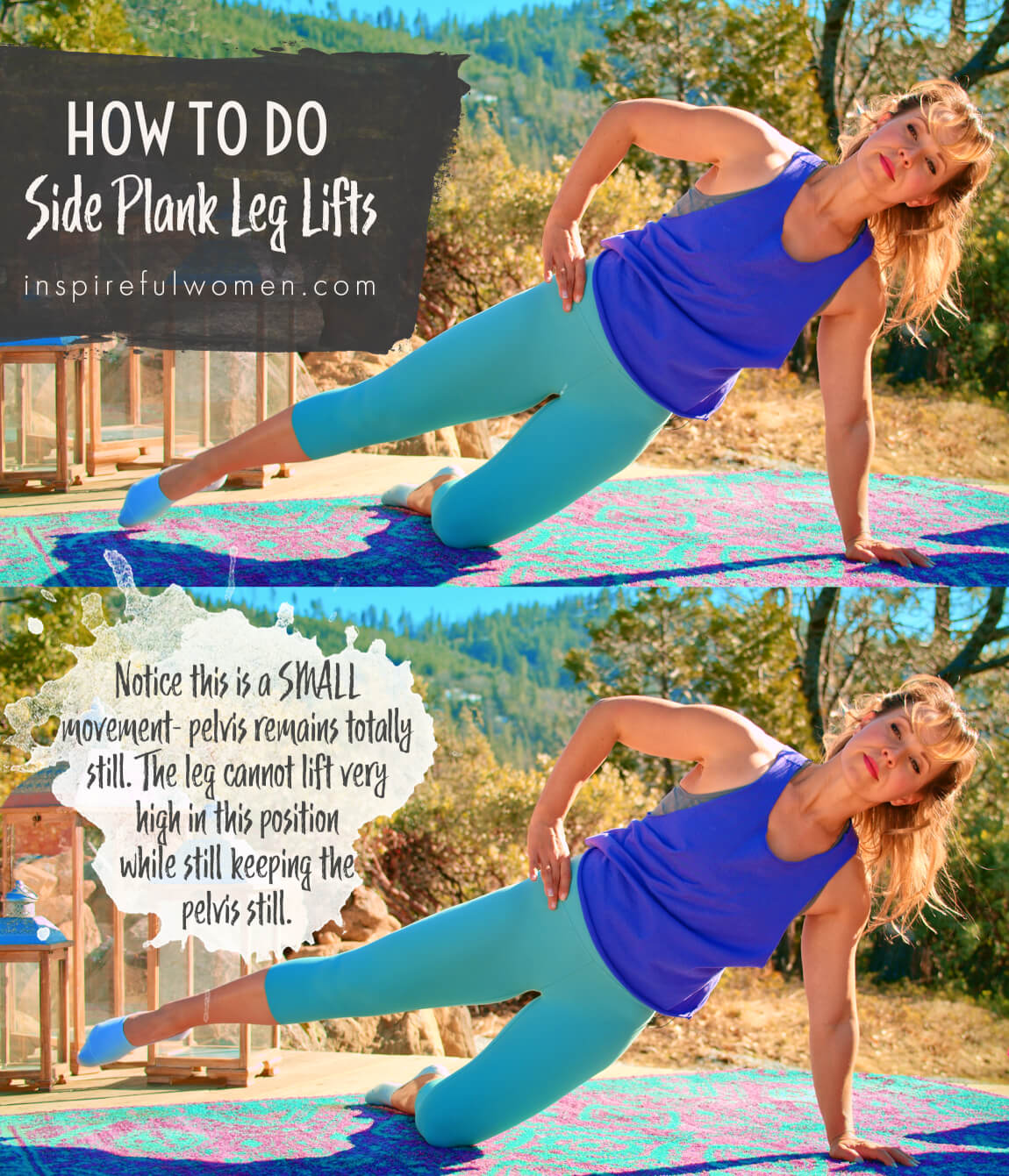
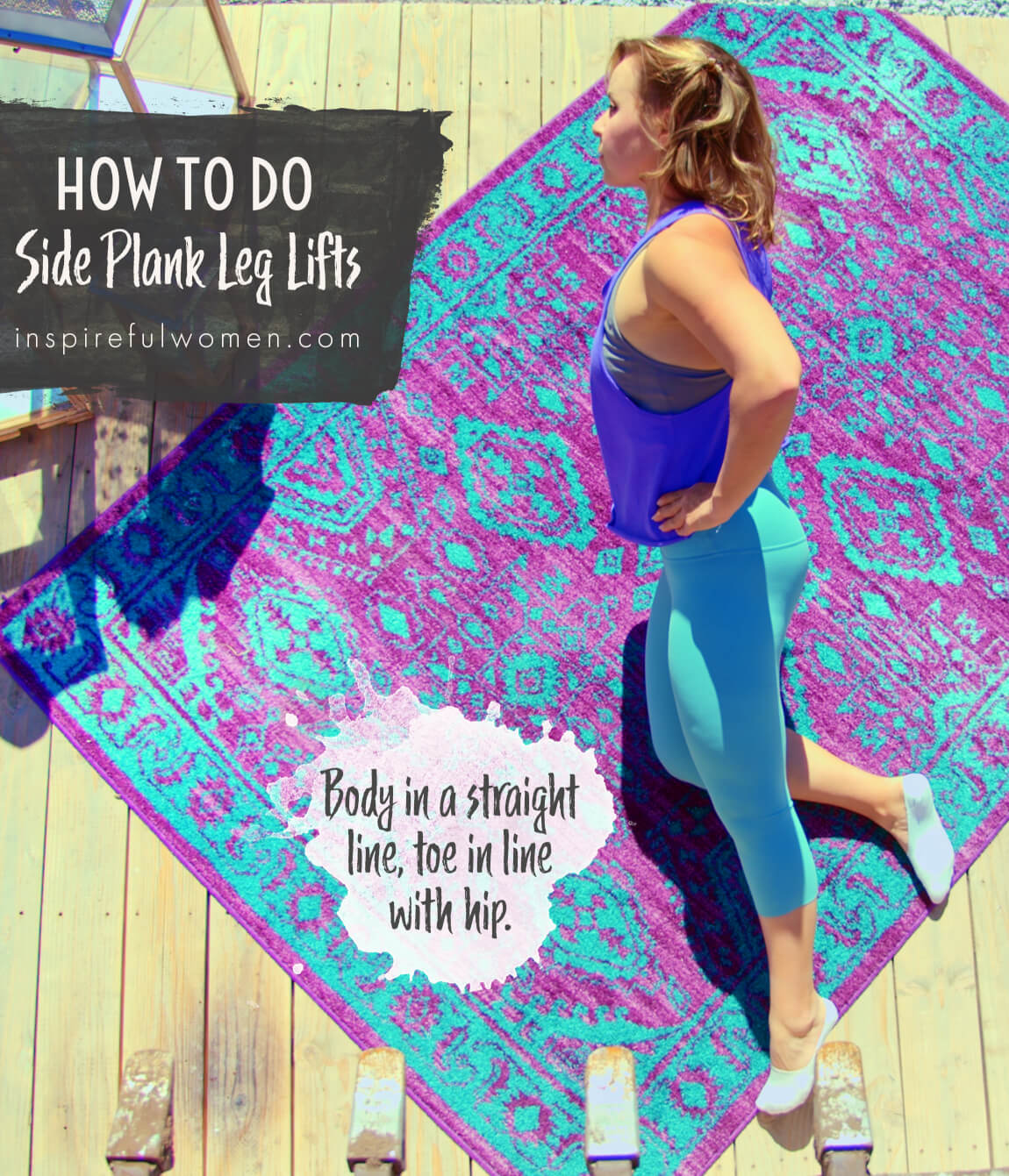
COMMON MISTAKES
COMMON MISTAKES
WHAT TO AVOID WITH Side Plank Leg Lifts
KEY TIP:
Guess what? Good news! Many avoids are the same for most movements. Once you learn the basics, there's really only a few extra avoids for each individual movement.
1. Avoid piking hips up or dropping hips
AVOID: Avoid letting the pelvis sag or move
WHY NOT?
- This will pull your low back out of the neutral position.
- This indicates that you are moving from your spine - repetitive spinal movement under load (weight of leg) ) can cause soft tissue/joint irritation or damage over time; and defeats the purpose of the exercise.
WHAT TO DO:
- Maintain a neutral spine position to prevent injury or muscle strain.
- In a side lying position, the sides of the torso should be equal - both lengthened.
- You can use your top hand to monitor the pelvis for movement.
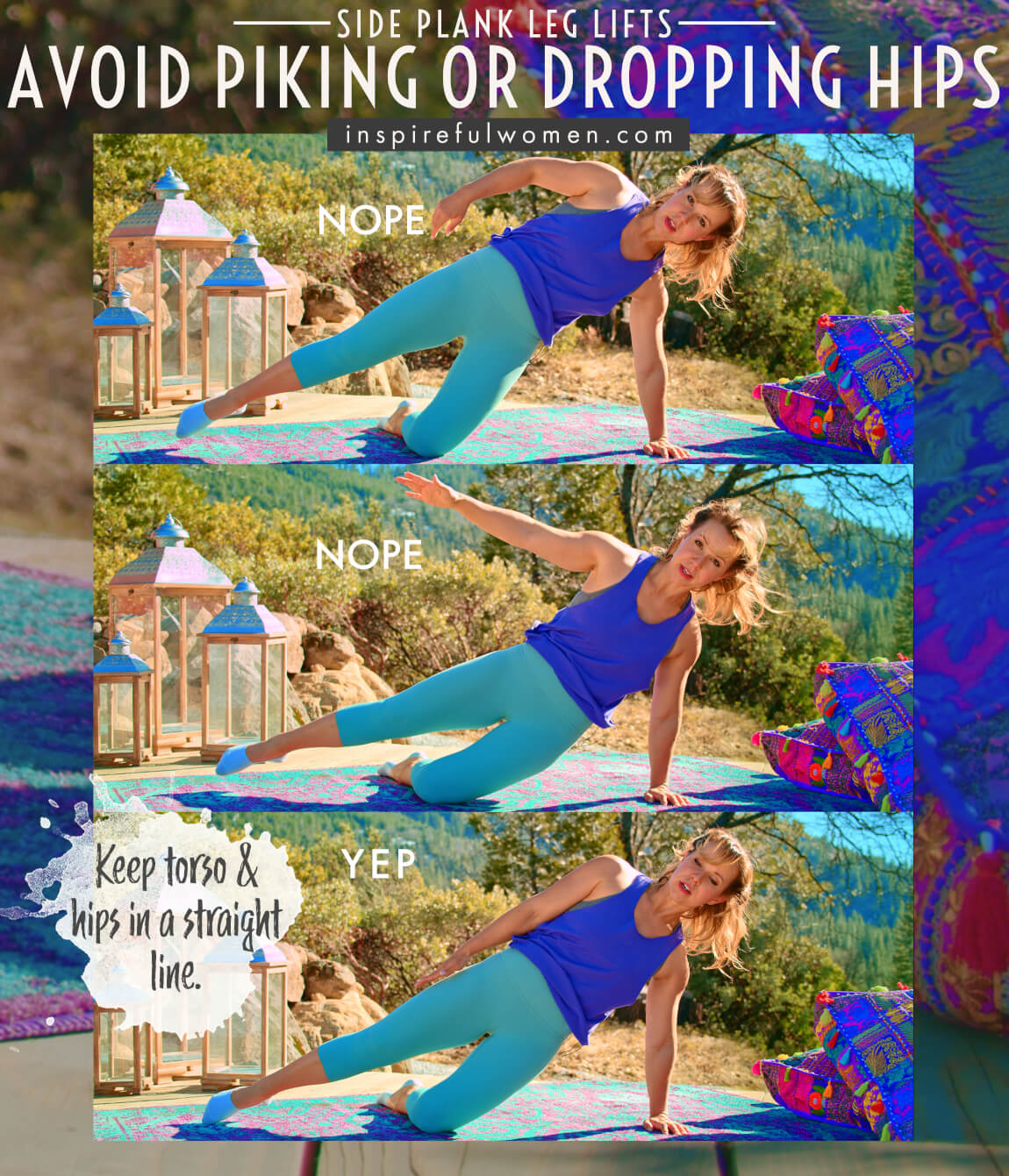
2. Avoid legs too high
AVOID: Avoid lifting your leg too high. This is the most common error/cheat for this exercise.
WHY NOT?
- The goal of the exercise is to keep the pelvis still and isolate the movement to the hip joint while lifting the leg out into abduction.
- The most common error is moving the pelvis and low back to get the leg higher.
WHAT TO DO:
- Normal movement of the leg out to the side is halfway or less to being straight up.
- Lifting the leg higher is not the goal, the goal is to keep the pelvis still as you lift the leg.
- To use the correct muscles, the hip abductors must have a stable base to work off of.
- If the pelvis moves then the muscle cannot lift the leg, the quadratus lumborum and gravity (collapsing the spine into sidebending) would be causing the leg to rise up.
- The targeted muscles would not be working, and the spine would be moving. So no benefit, only risk.
- The muscles will be challenged the most when the leg is parallel to the floor, lifting higher is easier.
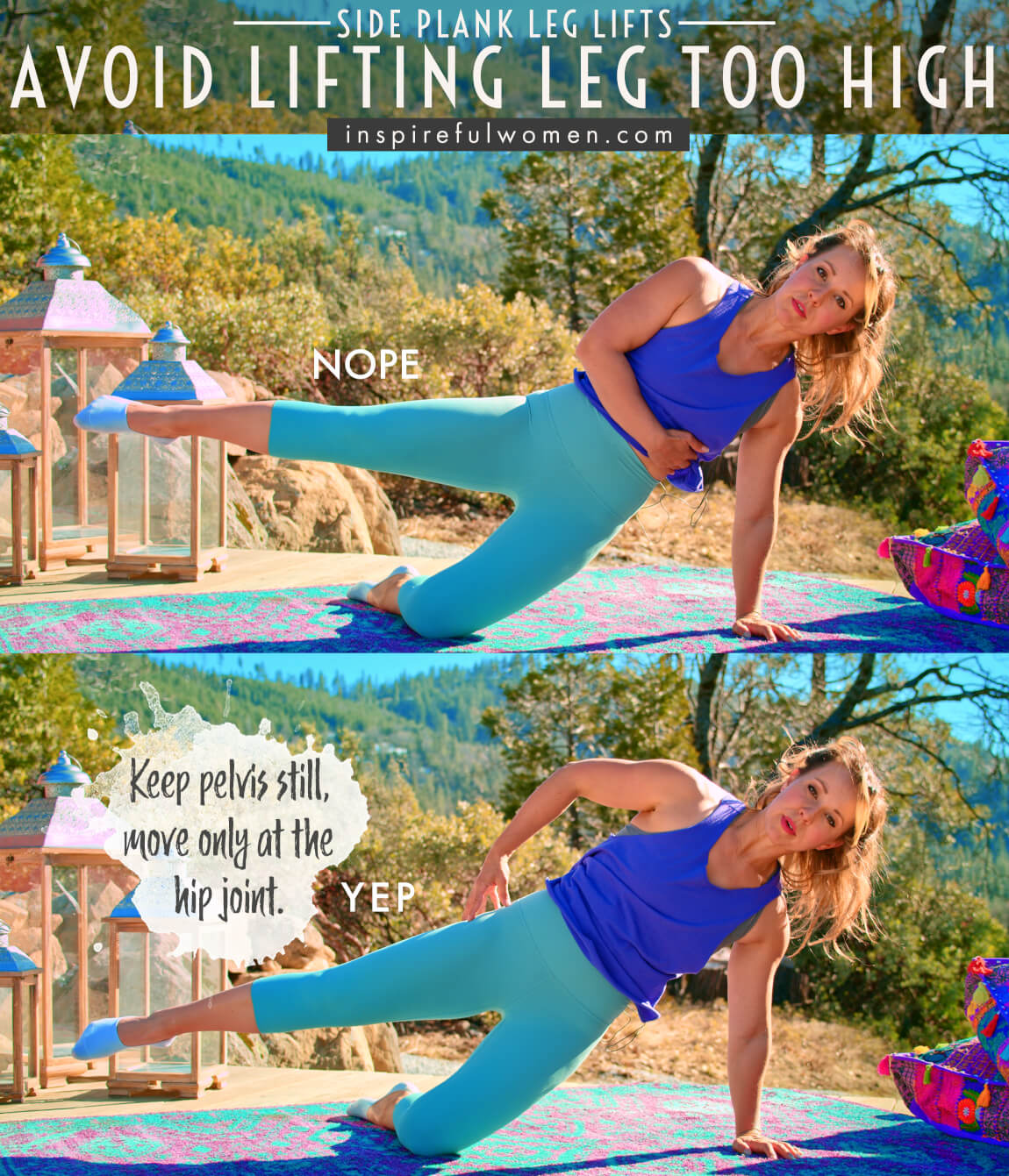
3. Avoid torso rotating forward or back
AVOID: Avoid letting your hips or shoulders rotate.
WHY NOT?
- Repetitive spinal rotation under load (resistance of band) can cause soft tissue/joint irritation or damage over time
- The goal of the exercise is to activate the muscles of the torso to hold the body still as the arm moves.
- Letting the hips or shoulders rotate will change the muscle activation.
WHAT TO DO:
- Keep your hips and shoulders stacked (One on top of the other) and squared.
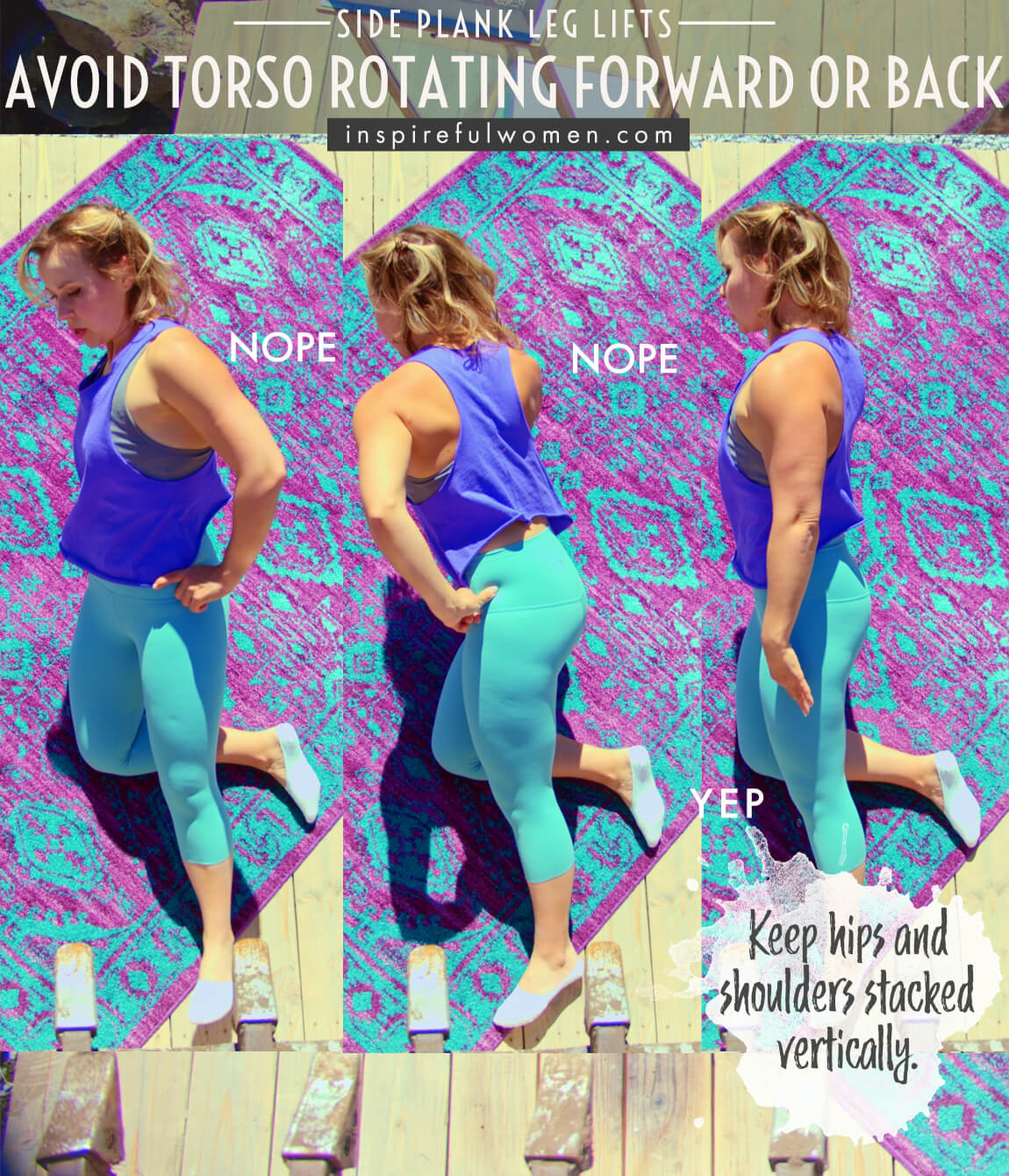
4. Avoid toe moving forward
AVOID: Avoid bending at the hip or moving toe forward.
WHY NOT?
- This will use the hip flexor muscles more to do the exercise rather than the hip muscles we're shooting for.
WHAT TO DO:
- Keep toe in line with the hip.
- No crease at the hip joint.
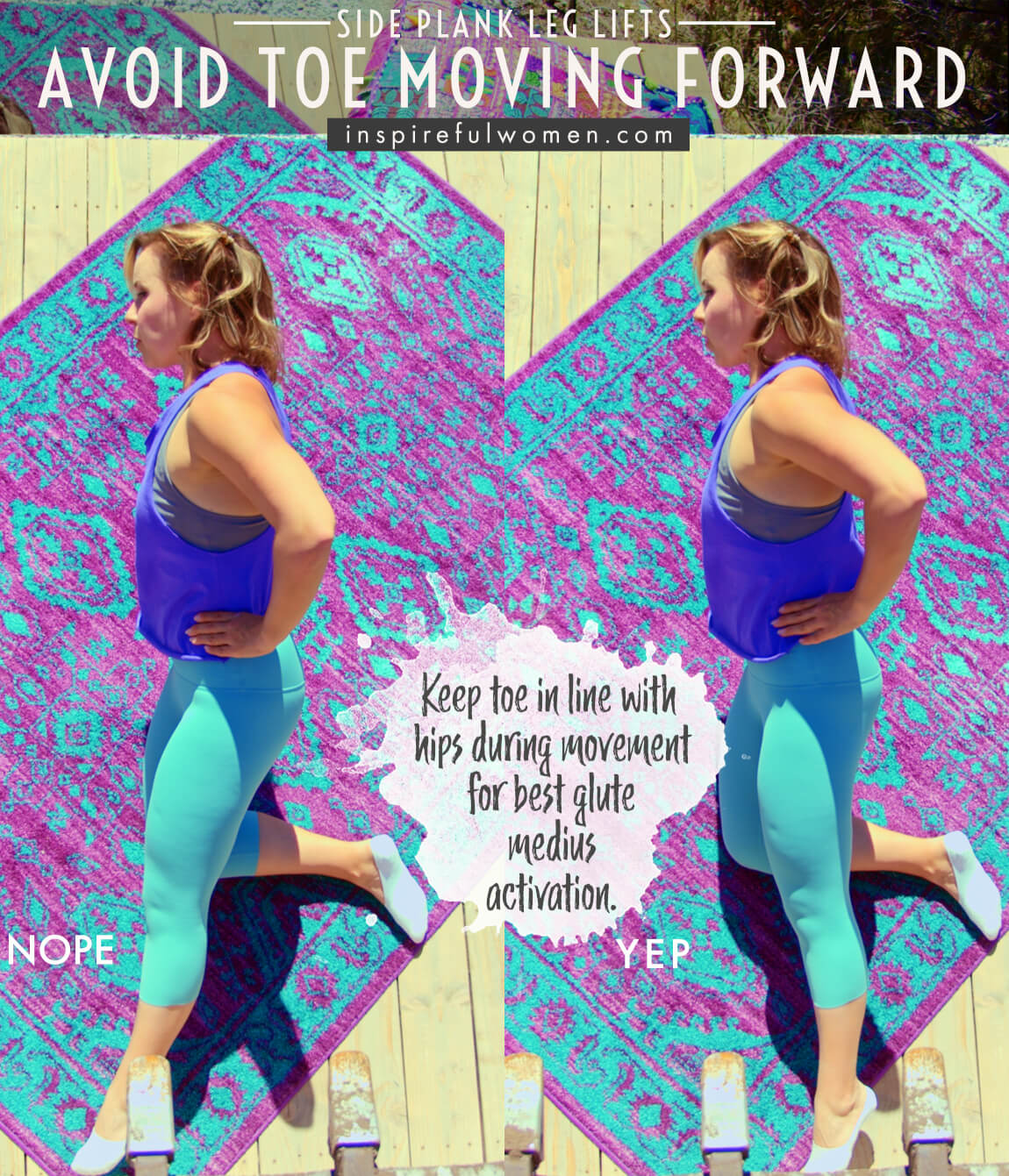
5. Avoid locking elbow of working arm
AVOID: Avoid locking or hyperextending the elbow.
WHY NOT?
- This puts too much force through the joint and may result in long term damage over time.
- This will also decrease the muscle activity of the arm muscles - relying more on the ligaments and elbow joint for support.
WHAT TO DO:
- Keep the elbow slightly bent if needed.
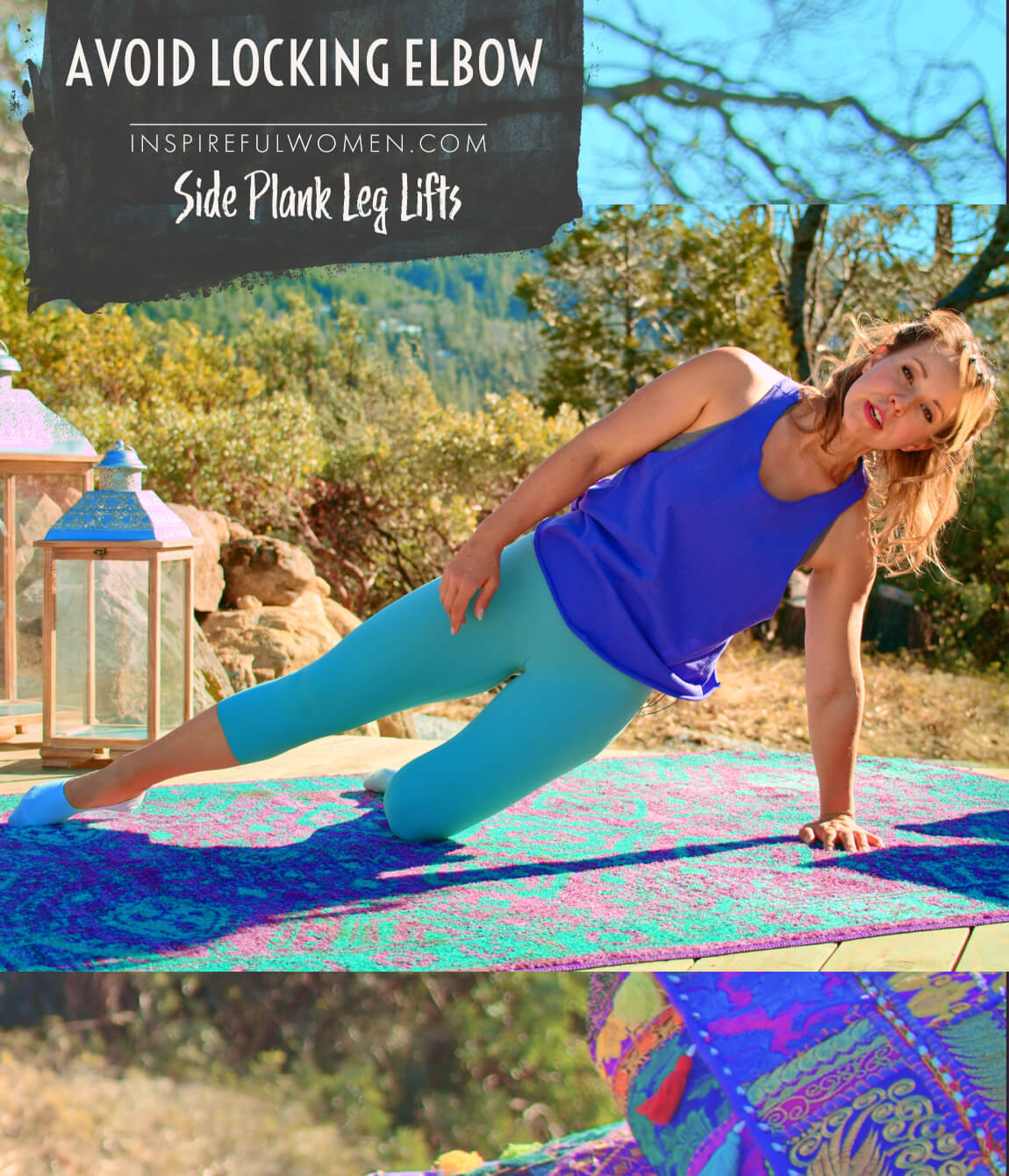
6. Avoid limping toes
AVOID: Avoid losing the energy down your leg to the foot.
WHAT TO DO:
-
Energizing the leg helps with stability and will use more of the muscles of the hip and leg.
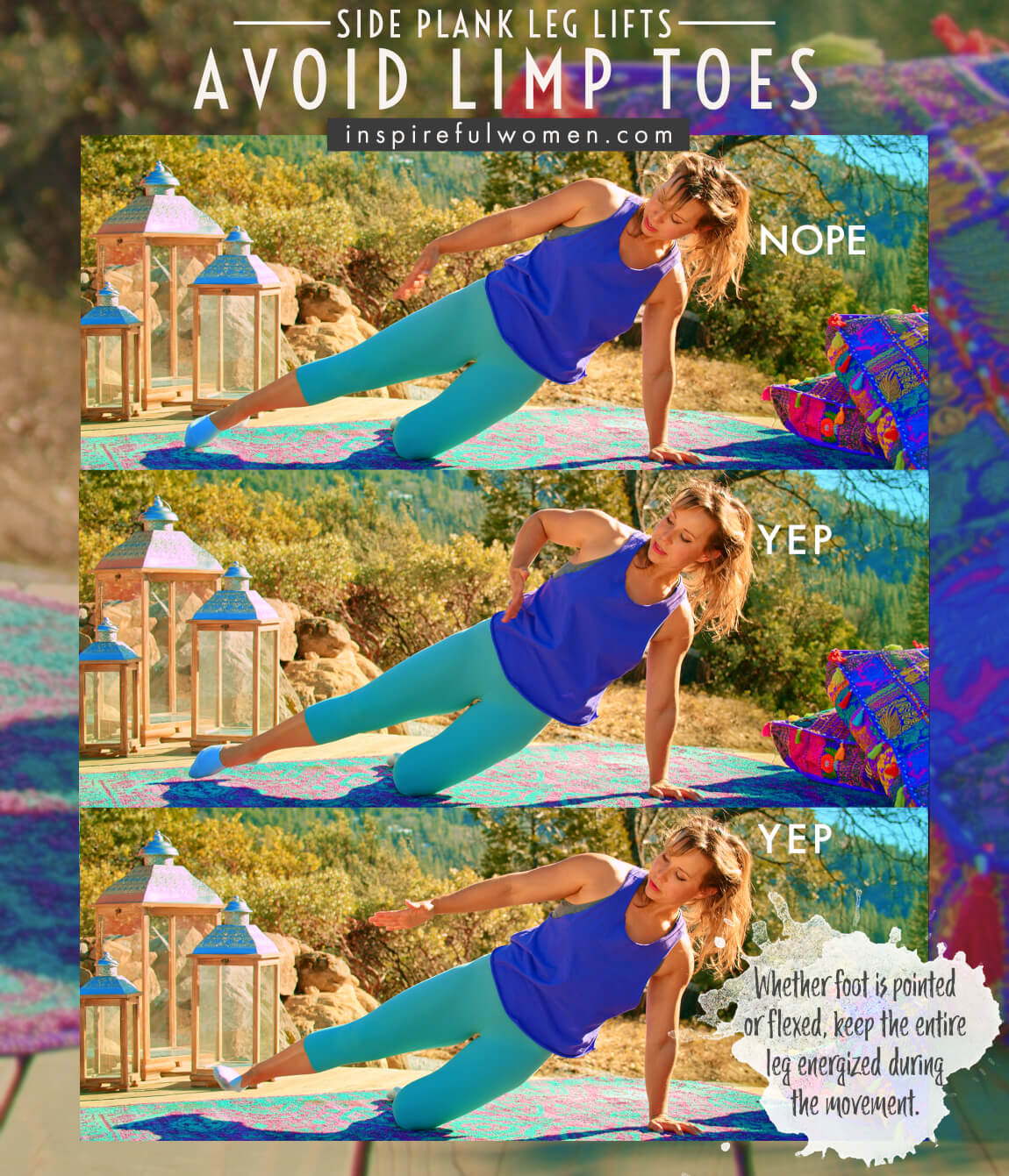
7. Avoid hunching shoulders
AVOID: Avoid letting the shoulder of the working arm rise up towards the ear
WHY NOT?
- This will decrease the activation of the postural muscles (mid and lower back, and core).
- Keep the shoulder blades retracted and depressed (down and back) to strengthen the muscles of the shoulder and upper back.

VARIATIONS
VARIATIONS
VARIATIONS OF Side Plank Leg Lifts
POINTING AND FLEXING THE TOES
Point Or Flex Foot
Flex (dorsiflexion) the ankle so the toes are lifted up towards your head when you lift the top leg.
Point the toes down (plantar flexion) as you lower the leg back down.
You can repeat for 5 repetitions and reverse the pattern: point and lift and flex and lower.
This will engage the muscles that cross the ankle and knee joints.
When the toes are pointed down, the calf muscles are more active, when the foot is flexed - toes lifted up, the front shin muscles are more active.
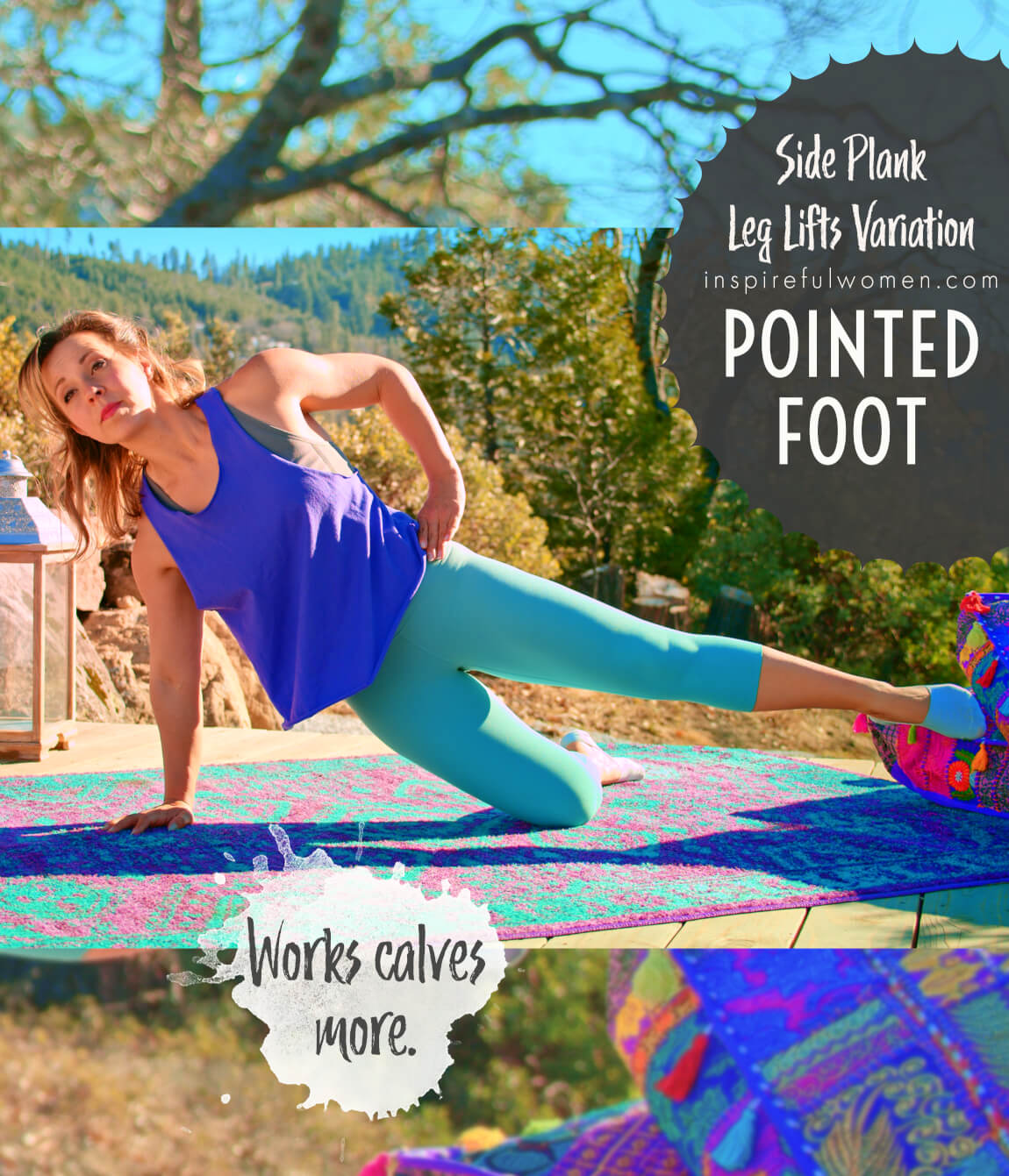
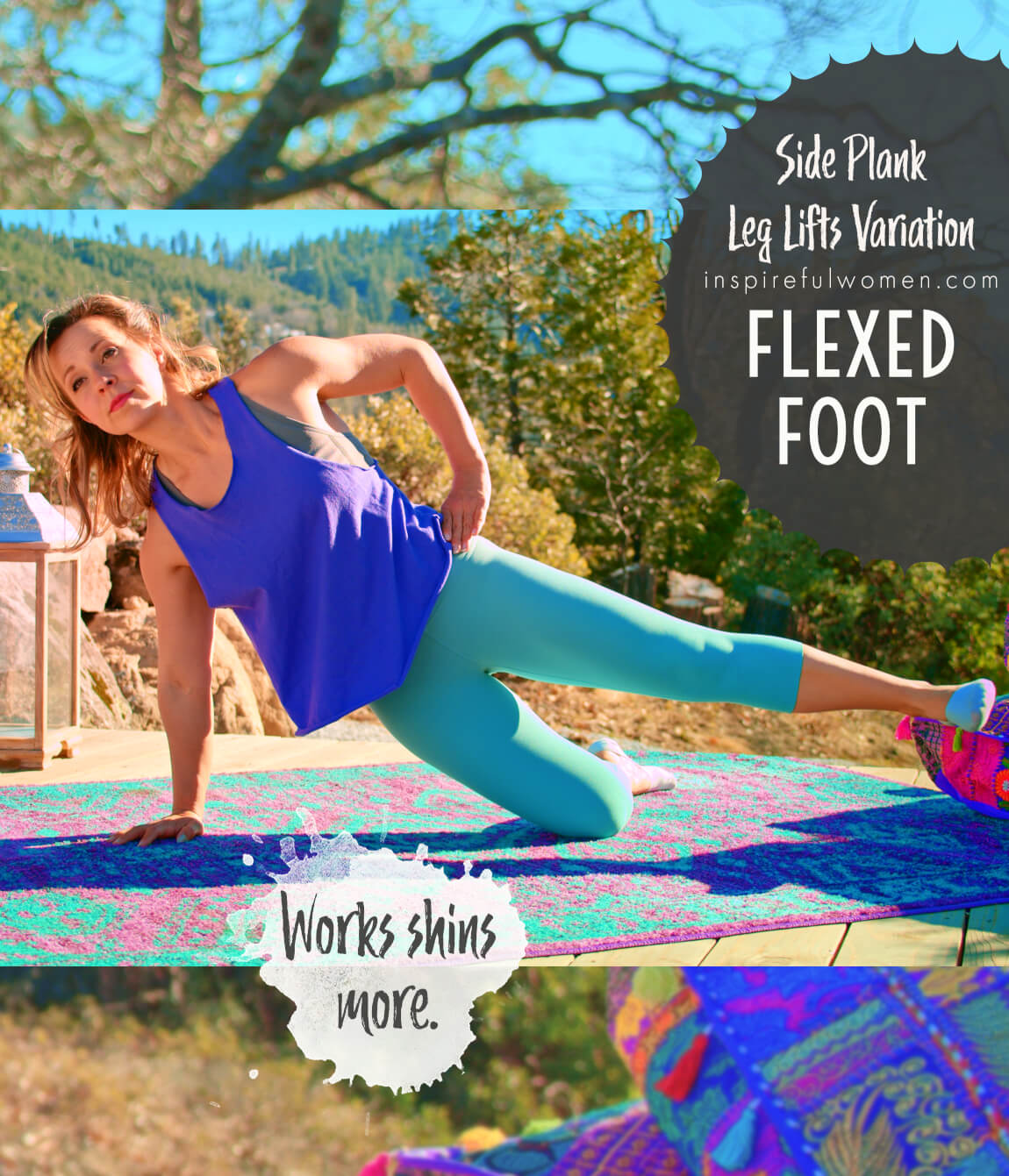
arm placement
Arm Position Options For Side Plank Leg Lifts
Move the top arm on top of the torso (lying the upper arm on the side of the torso). You can also hold the top arm up in the air - this challenges the stability more - core muscles will work harder. The top arm can be held in any position of comfort. Just lifting the arm off of the body will make you less stable and your core muscles will need to work harder.

full plank
Full Plank Leg Lifts
The bottom leg is straight, with the top leg stacked on top of it. Push up into a side plank position - bottom foot and hand will be on the floor. Keep the spine aligned and stable. This variation increases the lever arm for the torso, so the core muscles will be working harder to hold the position.
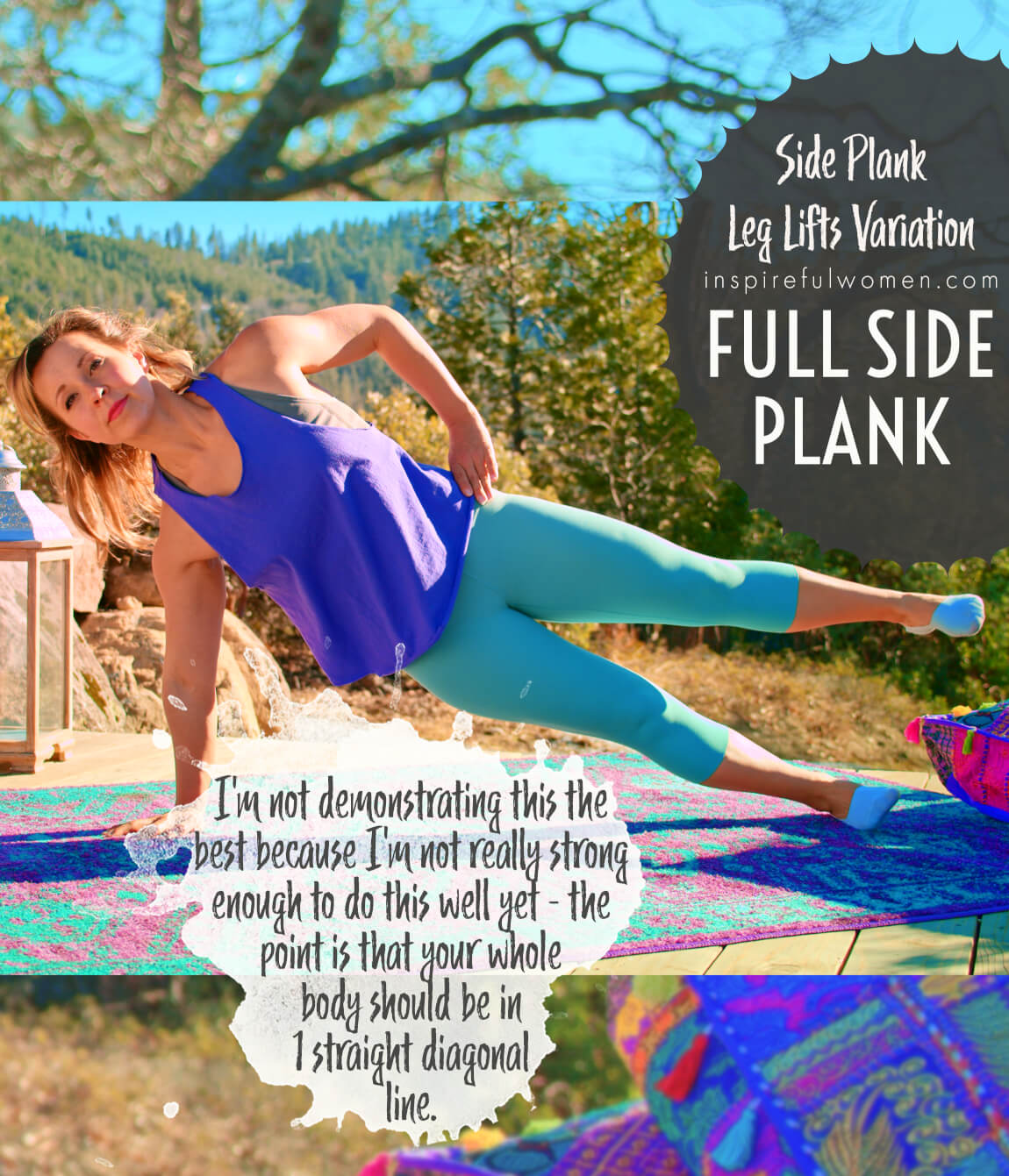
WHAT WE'RE DOING TODAY
WHAT & WHY
BENEFITS OF TRAINING THE Glutes
WHAT
These exercises combine a side plank with lifting the leg out to the side (up). When the side leg lifts are done in the side plank position, it is actually the muscles of the bottom leg that will be working the hardest.
The movement targets the muscles of the hip that are on the outside and inside of the leg, along with the muscles on the side of the torso that prevent rotation and side bending. The core muscles will be working hard to hold the torso still during the controlled movements of the leg. Abducting (lifting out to the side) the top leg works the hip abductors ( gluteus medius and minimus), with some help from the small and deeper hip muscles (piriformis and obturator internus).
The movements are done by getting into a side plank position, which can be a challenge by itself, and then holding the body very still as you lift the top leg up to work the hip muscles. When the leg lifts up the core muscles have to work even harder to hold the position.
These exercises are easy to progress from beginner level to very advanced. If you find it too difficult to control the leg movements when you are in the side plank position, try starting with the side-lying leg lifts and the side planks as two separate exercises.
WHY BOTHER DOING IT?
WHY
WHY DO WE EVEN CARE?
IMPROVES MOST OF OUR DAILY ACTIVITIES
Healthy and strong muscles of the core, hip, and abdominal muscles help to prevent knee, back, and ankle pain and injury, and improve nearly all daily activities including walking, running, climbing stairs, lifting, pulling, pushing, holding, and carrying. Weak hip muscles have been associated with increased fall risk and poor balance.
The hip abductors, the gluteus medius and minimus, are key players for keeping the joints of the hips, pelvis, and low back healthy. They play a critical role in holding this area stable during standing, walking, running, bending, transitioning from sitting to standing, going up and down the stairs, basically anything that you do when you are upright.
The pelvis and hips have to transfer all of the weight from the upper body equally down into the feet - when this area is unstable or weak, it can cause hip, knee, ankle or foot pain. The hips and pelvis are also needed to transfer forces from the ground to the upper body. This happens when you are walking and running - the impact of the foot hitting the ground travels up through the legs to the spine - strong and healthy legs, hips, and pelvic muscles help to absorb the shock of the impact before it hits the spine. The other way the force is transferred is when using the arms - for example - hitting a golf ball or shoveling snow. The feet push off of the ground and the force is transferred up the legs through the hips and pelvis to the arms, and then through to the club or shovel. Without strong and stable hip muscles the joints of the knees, hip, pelvis, and back will have to work a lot harder, and over time can become damaged trying to do more than they are supposed to be doing.
EFFECTIVE WAY TO STRENGTHEN THESE MUSCLES
The side bridge/plank position is a very effective position for strengthening the hip, trunk, and abdominal muscles, with most of the effort on the side that is weight-bearing on the floor. The addition of lifting the top leg will enhance the benefits of the exercise by adding strengthening of the top hip muscles and challenging the balance and stability of the core more to increase the muscle activity of the trunk and abdomen.
The exercise strengthens the trunk muscles in a neutral spine position, to avoid increasing the compression of the spine - no flexion or extension of the spine which causes increased spinal joint compression (may lead to injury or damage over time).
EVERYDAY LIFE
EVERYDAY LIFE &
MUSCLE FUNCTION
HOW WE USE OUR Glutes MUSCLES IN EVERYDAY LIFE
The main function of the core muscles is to stabilize the torso against forces: rotation, flexion (forward bending) and lateral flexion (side bending), movement of the torso, and compression of the abdomen (pulling the belly button in towards the spine).
1. ALL UPRIGHT ACTIVITIES
- Standing
- Walking
- Running
- Up and down the stairs
- Transferring sit to stand
- Climbing a ladder
- Squatting
- Getting up and down from the floor
2. WHILE USING THE ARMS
- Carrying
- Lifting
- Pushing
- Pulling
- Golf
- Shoveling
- Washing windows
GLUTEUS MEDIUS AND MINIMUS
1. MOVES THE LEG OUT TO THE SIDE WHEN THE PELVIS IS HELD STILL
- Stepping sideways
- Lifting the leg to the side to get into a car
2. IN STANDING, HOLDS THE PELVIS HORIZONTAL (PREVENT IT FROM SAGGING) DURING GAIT/MOVEMENT
- Walking
- Running
- Balance and stability when walking or standing
- Weak hip muscles have been associated with increased risk for falls and poor balance
- Especially on uneven surfaces, or across a slope
- Climbing stairs
3. THE HIP ABDUCTION EXERCISES FOCUS ON STRAIGHT ABDUCTION BUT IT IS IMPORTANT TO NOTE:
- The gluteus medius can contribute to flexion and internal rotation (anterior fibers) and extension and external rotation (posterior fibers) [this is similar to the actions of the different parts of the deltoid muscle].
- The gluteus minimus can help with flexion and internal rotation.
SCIENCY STUFF
ALL MUSCLES & WHEN
ALL MUSCLES WORKING & WHEN DURING Side Plank Leg Lifts
The muscles of the upper back, shoulder blade, and arm will work to hold the body still as it is pushed up into a side plank position. The legs and arm serve as the two weight-bearing points. In this position, the hips rest on the floor. In order to lift the hips up, the muscles on the side of the body closest to the floor contract concentrically to push up to the side plank position. The external and internal obliques, quadratus lumborum and the gluteus medius and minimus are the prime movers that work to lift the pelvis up into the side plank position.
The scapular stabilizers of the arm that is on the floor will work to hold the shoulder blade in retraction and depression. The rear
deltoid, teres major, and latissimus along with all of the rotator cuff muscles will hold the body lifted up onto the side and maintain the body’s vertical alignment.
All of the core muscles (internal and external obliques, quadratus lumborum, psoas major, rectus abdominis, erector spinae, multifidi, transverse abdominis) will contribute isometrically to stabilize the torso in the side plank position.
The abductors of the top leg will contract concentrically to lift the leg upwards. The quadratus lumborum and obliques contract to resist the side bending and rotational forces to prevent the pelvis from side bending as the leg is lifted.
The obliques will also be working to draw the abdomen inwards for general spinal stabilization: the obliques are broad flat muscles that wrap around the sides of the torso, when they contract they pull inwards to stabilize the midsection.
The hip abductors will work eccentrically to control the movement of the leg as it is lowered back down.
PIN IT FOR LATER!

